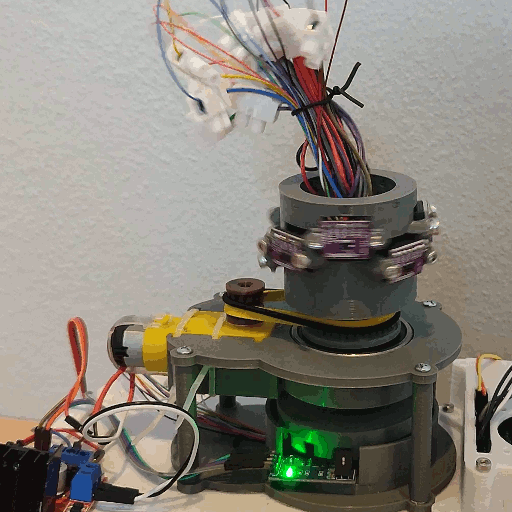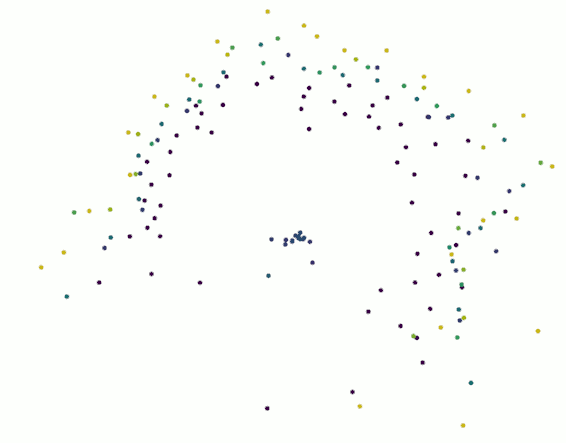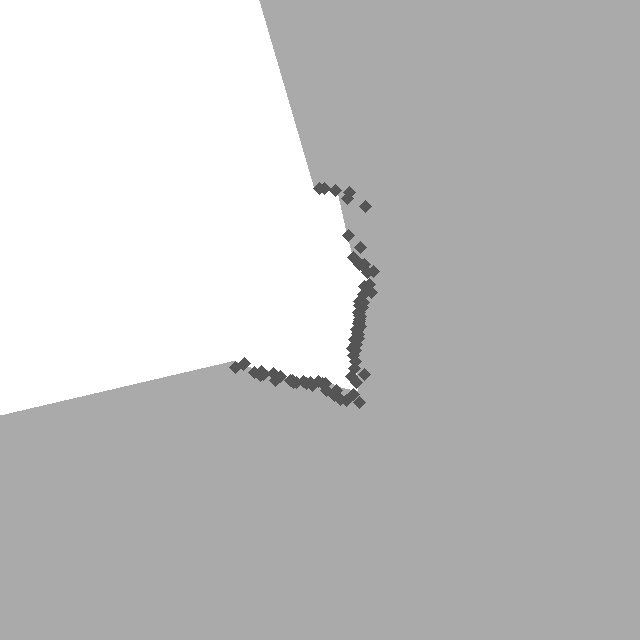DISCLAIMER: This Project is work in progress.
While the sensor is operational in its current form, updates will be provided, including new 3D printing files.
This repository houses all the necessary resources to build your very own budget-friendly 3D rotating LiDAR sensor. Equipped with this sensor, you can capture a comprehensive 360° environmental view at a scan rate of 2 Hz.
Included herein are .stl files, a detailed list of required electronic components, precise wiring instructions, and essential software.
Though primarily an Arduino project, you'll also find a version of the code adapted for ESP32. Keep in mind, small but crucial differences exist between these two microcontrollers.
Note: This project utilizes 8x vl53l0x LiDAR range finders with a reliable range of up to 3 meters. If you're interested in longer-range sensors and not necessarily in 3D point cloud data, consider this alternative project: https://github.com/iliasam/OpenTOFLidar
| Rotating LiDAR Sensor | LiDAR Data Visualization (5x Speed) |
|---|---|
 |
 |
At the heart of this LiDAR, 8 vl53l0x laser range sensors are affixed around a rotating axis, each oriented toward a common origin at a unique vertical angle. The rotation angle is measured by a rotation encoder disc situated at the base of the LiDAR. The three values - range, elevation angle, and rotation angle - allow us to reconstruct the relative position in a Cartesian coordinate system from the common origin.
 |
|---|
| Schematic Drawing of the Mounting Angles |
The potential applications for this 3D LiDAR are plentiful, ranging from mapping rooms for Roomba-style robots to assisting in autonomous navigation within your home.
 |
|---|
| Occupancy Grid Map Using the LiDAR Sensor Data (1x Speed) |
You can verify the quality of the resulting point cloud data before embarking on this project by examining the log sequence displayed above. This can be found here. Use this script to visualize the points in Python.
-
3D Printing Part List - Download the STL files for 3D printing here and find the printing parameters and assembly instructions here.
-
Sensor Code - The C code for the microcontroller is available for Arduino UNO and for ESP32. Though untested on other microcontrollers, slight modifications should make it compatible.
-
Python Interface - If you prefer Python for its simplicity, feel free to use my prepared Python scripts to record and/or visualize the sensor output.
- Requirements
- Python 3
- numpy
- scipy
- Open3D (optional for visualization)
- Requirements
-
ROS Interface - Currently under development. If you wish to contribute to communication between the Arduino/ESP32 and a Master, please feel free to submit a PR.
Below is a complete list of parts needed to build this 8-channel LiDAR sensor:
| Part | Quantity | Cost per Item | Amazon Link |
|---|---|---|---|
| Vl53l0x | 8 | ||
| Basic 3-12V DC Motor | 1 | ||
| Motor Driver | 1 | ||
| Microcontroller | 1 | ||
| 12 Wire Slip Ring | 1 | ||
| Motor Comparator Speed Sensor Module | 1 | ||
| Jumper Wires | 37 | ||
| Set of M3 Screws | 1 | ||
| Rubber Band | 1 |